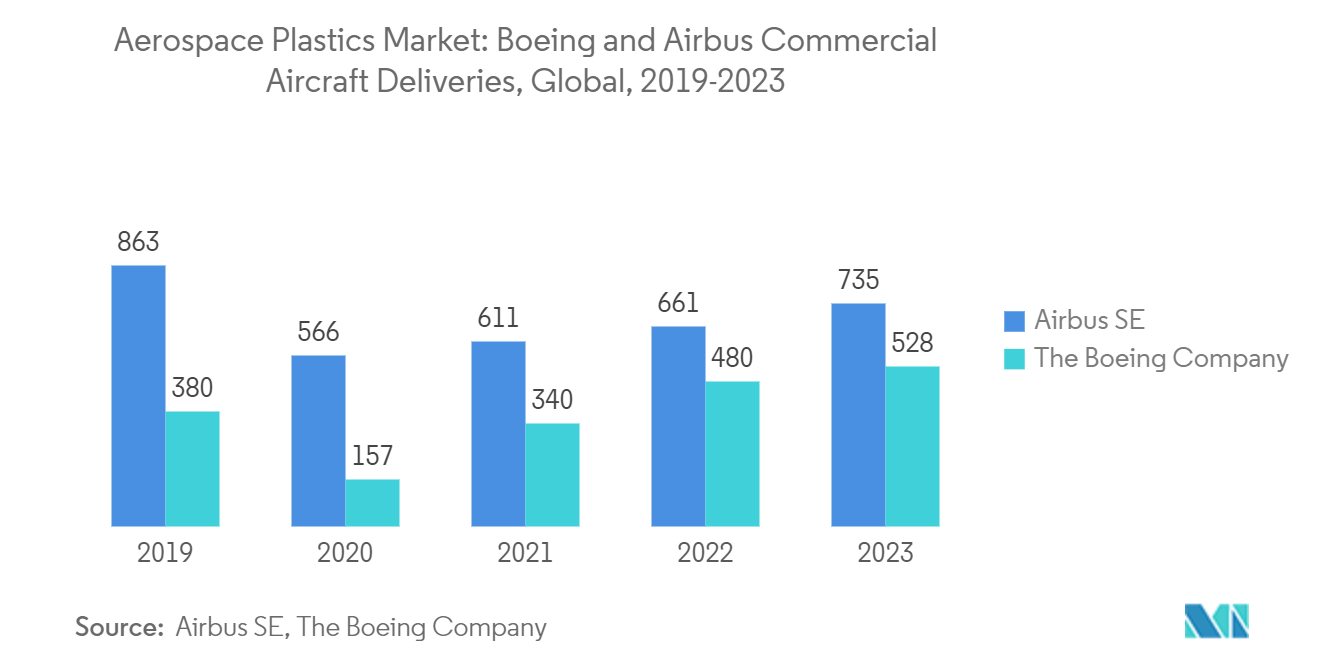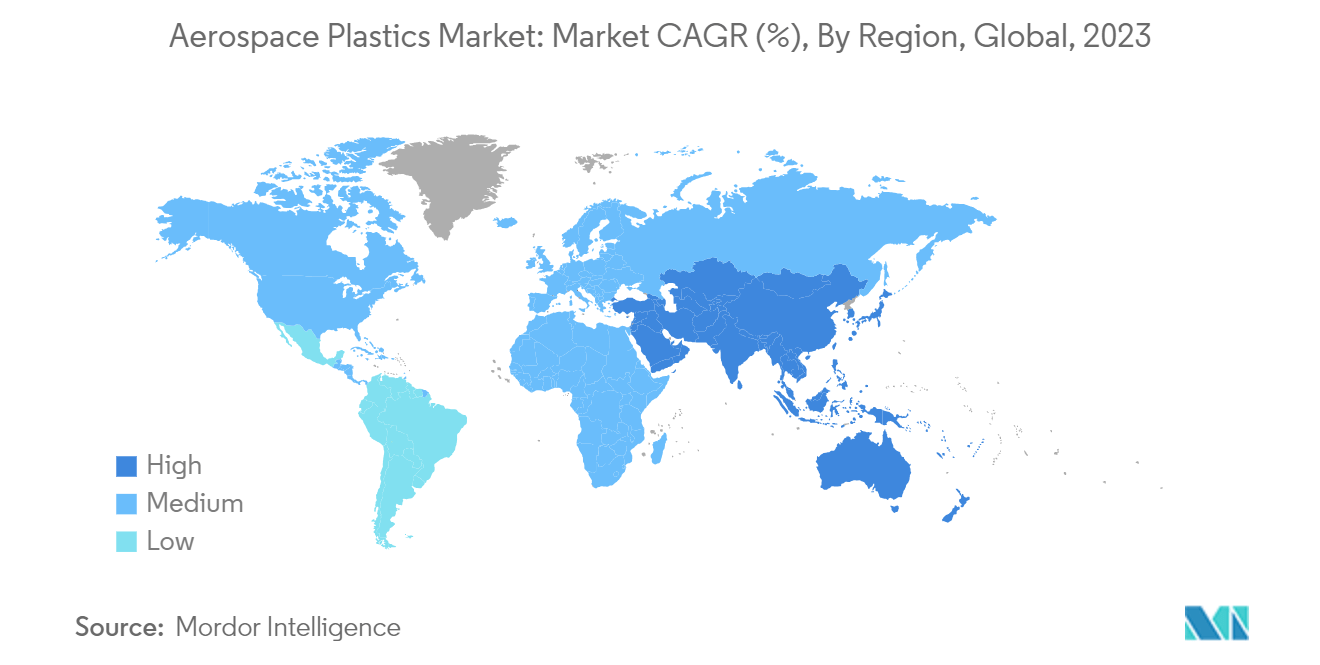Market Trends of Aerospace Plastics Industry
Cabin Interiors to Witness Higher Growth During the Forecast Period
The cabin interiors segment is expected to grow with the highest CAGR in the forecast period owing to the growing number of aircraft deliveries. Plastics are used to design and manufacture several cabin components, such as air ducts, cabin partitions, floor panels, and overhead luggage bins. The aircraft manufacturing industry is focusing on reducing the aircraft's overall weight while maintaining or even improving its total load-carrying capacity. Thus, the need to design and produce high-performance aircraft within a weight constraint is the main driver for aircraft OEMs to use lightweight composites in manufacturing.
Airlines are focused on maintaining a consistent brand image and capturing the lucrative business traveler consumer segment. Retrofitting activities of old aircraft cabins range from individual seats to entire cabins. Operators are increasingly retrofitting their fleets as cost-effective solutions over procuring new aircraft. Thus, they are striving to achieve the right balance between cost and aesthetics. Such factors drive the adoption of plastics for cabin applications as monetary and safety benefits yielded by plastics render them appropriate for usage in such applications.

Europe to Dominate the Market During the Forecast Period
Air travel is rapidly increasing in Europe due to increased disposable income, changes in lifestyle, competitive airline services, and others. Leading market players are enhancing the level of services offered by modernizing aircraft. The rise in low-cost airlines in emerging economies provides an opportunity for the growth of the aerospace plastics market. Low-cost airlines tend to buy narrow-body aircraft that cover short distances and are easy to maintain. This has increased demand for narrow-body aircraft, directly affecting the demand for aircraft cabin interiors and further creating better scope for the aerospace plastics market.
Within Europe, the network of low-cost airlines is very well developed, and most destinations are now also served by low-cost airlines. For instance, Ryanair is an Irish low-cost airline based in Dublin, with its home base at Dublin Airport. It is Europe’s largest airline, with 152 million travelers per year. Likewise, easyJet is another popular LCC that operates several hundred routes between numerous European countries, including North Africa, Turkey, and Israel. Aircraft manufacturers witnessed a surge in orders from European carriers in 2023 as the industry prioritized environmentally friendly and efficient planes.
Airbus secured significant orders, including Air France-KLM's monumental order for 50 Airbus A350s and 4 A350 Freighters. Since July 2023, Air France has continued to modernize its fleet by gradually integrating new aircraft. In its new configuration, the Airbus A350-900 features 292 brand-new seats, with 48 in the Business cabin, 32 in Premium Economy, and 212 in Economy. Such factors will lead to the growth of the aerospace plastics market in Europe.


